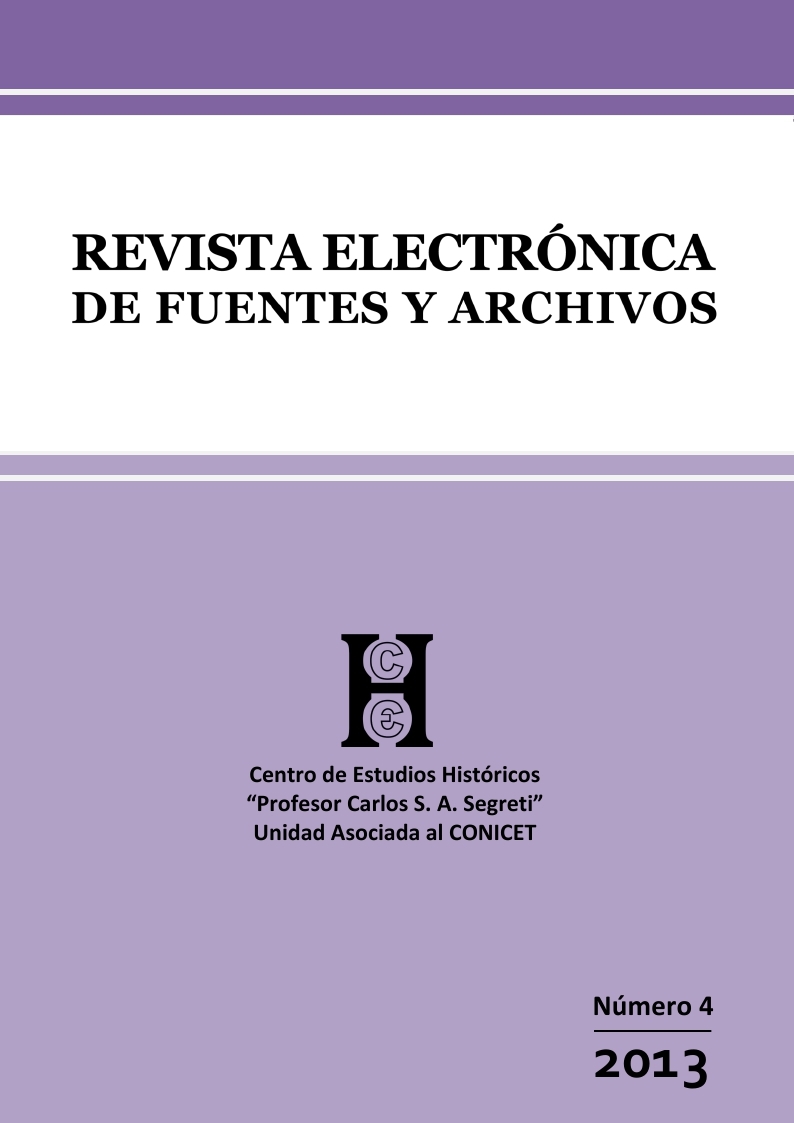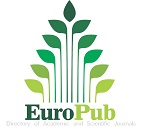The Weight of the Written Word. The difficult affirmation of the "visual" in the Italian historiography of science
Keywords:
visual history, italian historiography, historiographical trends, iconic turnAbstract
This paper addresses the way in which Italian historians of science have dealt in recent decades with the new perspectives arising from the so-called iconic turn. The "visual" has had some difficulty in making headway in a historiographical practice which is, in many ways, still very traditional. The crisis of the Italian university system and the lack of turnover have contributed to making this even more difficult.
Downloads
References
BAIGRIE Brian Scott (ed.), Picturing Knowledge. Historical and Philosophical Problems Concerning the Use of Art in Science, Toronto, University of Toronto Press, 1996.
BARROW John D., Cosmic Imagery: Key Images in the History of Science, London, Random House, 2008.
BARSANTI Giulio, La scala, la mappa, l'albero. Immagini e classificazioni della natura fra sei e ottocento, Firenze, Sansoni, 1992.
BERETTA Marco, Storia materiale della scienza. Dal libro ai laboratori, Milano, Bruno Mondadori, 2002.
BERGSON Henri, L’évolution créatrice, Parigi, Presses Universitaires de France, 2007 (1907).
BIAGIOLI Mario, “Galileo the Emblem Maker”, Isis, núm. 81, 1990, pp. 230-258.
BLOCH Marc, Apologia della storia o mestiere dello storico, Torino, Einaudi, 1969.
BOEHM Gottfried, Was ist ein Bild?, Mónaco, Fink, 1994.
BREDEKAMP Horst, Darwins Korallen. Die frühen Evolution Diagramme und die Tradition der Naturgeschichte, Berlin, Wagenbach, 2005.
BREDEKAMP Horst, Galilei der Künstler. Der Mond, die Sonne, die Hand, Berlin, Akademie Verlag, 2007.
BUCCHI Massimiano, “Images of Science in the Classroom: Wall charts and Science Education 1850-1920”, The British Journal for the History of Science, núm. 31, 1998, pp. 161-184.
BURDA Hubert und Christa MAAR, Iconic Turn. Die neue Macht der Bilder, Colonia, DuMont Verlag, 2004.
BURKE Peter, Eyewitnessing. The Uses of Images as Historical Evidence, Londres, Reaktion Books, 2001.
BURNETT D. Graham, “A View from the Bridge: The Two Cultures Debate, Its Legacy, and the History of Science”, Daedalus, núm. 128, 1999, pp. 193-218.
CAMEROTA Filippo, La prospettiva nel Rinascimento. Arte, architettura, scienza, Milano, Electa, 2006.
CANADELLI Elena, Stefano LOCATI, Evolution. Darwin e il cinema, Milano, Le Mani-Microart’S, 2009.
CANGUILHEM Georges, L’objet de l'histoire des sciences, in Etudes d'histoire et de philosophie des sciences, París, 1975, trad. it. F. BONICALZI (ed.), “L’oggetto della storia delle scienzeˮ, La ragione cieca, Milano, Jaca Book, 1982.
CARLINO Andrea, La fabbrica del corpo. Libri e dissezione nel Rinascimento, Torino, Einaudi, 1994.
DASTON Lorraine and Peter GALISON (ed.), Objectivity, Boston, Zone Books, 2007.
DE CEGLIA Francesco Paolo, “Quello che le parole non dicono. Visuale e materiale nel recente dibattito storico-scientifico italiano”, Storica, núm. 51, 2011, pp. 53-82.
DE CEGLIA Francesco Paolo, “From the Laboratory to the Factory, by Way of the Countryside: Fifty Years of Italian Scientific Cinema (1908-1958)”, Public Understanding of Science, núm. 21, 2012, pp. 949-967.
DE CHADAREVIAN Soraya and Nick HOPWOOD (eds.), Models: The Third Dimension of Science, Stanford, Stanford University Press, 2004.
DIBATTISTA Liborio, Il movimento immobile. La fisiologia di E.-J. Marey e C.E. François Franck (1868-1921), Firenze, Olschki, 2010.
DIKOVITSKAYA Margaret, Visual Culture. The Study of the Visual after the Cultural Turn, Cambridge Mass., MIT Press, 2005.
ECO Umberto e Giovanni Battista ZORZOLI (eds.), Storia figurata delle invenzioni. Dalla selce scheggiata al volo spaziale, Milano, Bompiani, 1961.
EISENSTEIN Elizabeth, The Printing as an Agent of Change: Communications and Cultural Transformations in Early Modern Europe, Cambridge, Cambridge University Press, 1979.
FEEST Uljana, “Concepts of Tools in the Experimental Generation of Knowledge in Cognitive Neuropsychology”, Spontaneous Generations: A Journal for the History and Philosophy of Science, núm. 4, 2010, pp. 173-190.
GALISON Peter, Einstein's Clocks, Poincaré’s Maps. Empires of Time, New York, W.W. Norton, 2003.
GALISON Peter, Image and Logic. A Material Culture of Microphysics, Chicago, University of Chicago Press, 1997.
HAGNER Michael, Renato G. MAZZOLINI and Claudio POGLIANO (eds.), “Biographies of Scientific Images”, Nuncius. Journal of the History of Science, núm. 24, 2009.
HUIZINGA Johan, Herfsttij der Middeleeuwen, Haarlem, Tjeenk Willink, 1919.
IVINS William Mills Jr., On the Rationalization of Sight: With an Examination of Three Renaissance Texts on Perspective, New York, DaCapo Press, 1938.
JAY Martin, Downcast Eyes: The Denigration of Vision in Twentieth-Century French Thought, Berkeley, Los Angeles, University of California Press, 1994, pp. 149-209.
JONES Caroline A. e Peter GALISON (eds.), Introduction, in Picturing Science Producing Art, Londra, Psychology Press, 1998.
KEMP Martin, Seen and Unseen. Art, Science, and Intuition from Leonardo to the Hubble Telescope, Oxford, Oxford University Press, 2006.
LANDAU David, Peter PARSHALL, The Renaissance Print: 1470-1550, New Haven, Yale University Press, 1994.
LANDECKER Hannah, Microcinematography and the History of Science and Film, Isis, núm. 97, 2006, pp. 121-132.
LATOUR Bruno, “Les vues de l’esprit. Une introduction à l’anthropologie des science et des techniquesˮ, Culture technique, núm. 14, 1985, pp. 4-30.
LATOUR Bruno and Steve WOOLGAR, Laboratory Life. The Social Construction of Scientific Facts, Beverly Hills, Londra, Princeton University Press, 1979.
LEFÈVRE Wolfgang, Jürgen RENN and Urs SCHOEPFLIN, The Power of Images in Early Modern Science, Basilea, Boston, Berlino, Springer, 2003.
LUGLI Adalgisa, Naturalia e Mirabilia. Il collezionismo enciclopedico nelle Wunderkammern d’Europa, Milano, Mazzotta, 1983.
LYNCH Michael, “Discipline and the Material Form of Images: An Analysis of Scientific Visibility”, in Social Studies of Science, núm. 15, 1985, pp. 37-66.
LYNCH Michael E. and Steve WOOLGAR (eds.), Representation in Scientific Practice, Cambridge Mass., MIT Press, 1990.
MAZZOLINI Renato G.,“Preface”, ID. (ed.), Non-Verbal Communication in Science Prior to 1900, Firenze, Olschki, 1991.
MAZZOLINI Renato G., “Sulle pratiche di visualizzazione nelle scienze”, Martin L. FRANK e Claudio POGLIANO (eds.), Scorci di storia della scienza, Pisa, Pisa University Press, 2010.
MAZZOTTI Massimo, “Listing Widely”, Times Higher Education, núm. 8, 2012, pp. 43-45.
MEROI Fabrizio e Claudio POGLIANO (eds.), “Introduzione”, Immagini per conoscere. Dal Rinascimento alla Rivoluzione scientifica, Atti della giornata di studio, Firenze, 29 ottobre 1999, Firenze, Olschki, 2001.
MILLER Arthur I., “Visualization Lost and Regained: The Genesis of the Quantum Theory in the Period 1913-27”, Judith WECHSLER (ed.), On Aesthetics in Science, Cambridge Mass., MIT Press, 1981, pp. 73-104.
MITCHELL William J.T., Iconology. Images, Text, Ideology, Chicago, University of Chicago Press, 1980.
MITCHELL William J.T., The Language of Images, Chicago, University of Chicago Press, 1980.
MORUS Iwan Rhys, Seeing and Believing Science, Isis, núm. 97, 2006, pp. 101-110.
MUKHERJEE Siddhartha, The Emperor of All Maladies: A Biography of Cancer, New York, Scribner, 2010.
OLMI Giuseppe, L’inventario del mondo. Catalogazione della natura e luoghi del sapere nella prima età moderna, Bologna, il Mulino, 1992.
OLMI Giuseppe, Lucia TOMASI TONGIORGI e Attilio ZANCA (eds.), Natura-cultura. L’interpretazione del mondo fisico nei testi e nelle immagini, Atti del convegno internazionale di studi, Mantova, 5-8 ottobre 1996, Firenze, Olschki, 2000.
PANOFSKY Erwin, Galileo as Critic of the Arts, L’Aia, Nijhoff, 1954.
POGLIANO Claudio, “Il contagio del visuale nella storia della scienza”, Contemporanea. Rivista di storia dell’800 e del 900, núm. 9, 2006, pp. 709-718.
RUDWICK Martin J.S., “The Emergence of a Visual Language for Geological Sciences 1760-1840”, History of Science, núm. 14, 1976, pp. 149-195.
SARTON Georges, “The History of Medicine Versus the History of Art”, Bulletin of the History of Medicine, núm. 10, 1941, p. 132.
SHEA William R., Science and the Visual Image in the Enlightenment, Canton, Science History Publications, 2000.
SMITH Pamela H., Art, Science, and Visual Culture in Early Modern Europe, Isis, núm. 97, 2006, pp. 83-100.
SNOW Charles Percy , The Two Cultures and the Scientific Revolution, Cambridge, Cambridge University Press, 1959.
SORBA Carlotta, Simona TROILO, “Le prospettive del visuale: storia e immagini”, Contemporanea. Rivista di storia dell’800 e del 900, núm. 9, 2006, pp. 701-746.
TOMASI TONGIORGI Lucia [et. al.], La scienza a corte. Collezionismo eclettico, natura e immagine a Mantova fra Rinascimento e Manierismo, Roma, Bulzoni, 1979.
TOSI Virgilio, Il cinema prima del cinema, Milano, Il Castoro, 2007.
TUCKER Jennifer, The Historian, the Picture, and the Archive, Isis, núm. 97, 2006, pp. 111-120.
VILLA Renzo, “Scienza e scienziati di pietra e di bronzo”, Francesco CASSATA e Claudio POGLIANO (eds.), Annali della Storia d'Italia. XXVI. Scienze e cultura dell’Italia unita, Torino 2011.
WARNER Deborah Jean, “What is a Scientific Instrument, When did it Become One, and Why?”, British Journal for the History of Science, núm. 23, 1990, pp. 83-93.
WISE Norton, “Making Visible”, Isis, núm. 97, 2006, pp. 75-82.
Downloads
Published
Issue
Section
License
Copyright (c) 2013 Francesco Paolo de Ceglia

This work is licensed under a Creative Commons Attribution-NonCommercial-ShareAlike 4.0 International License.
Se puede compartir (copiar y redistribuir el material en cualquier medio o formato) y adaptar (remezclar, transformar y construir a partir del material), siempre que: a) se cite la autoría y la fuente original de su publicación (revista, editorial y URL de la obra); b) no se use con fines comerciales; c) la distribución de las obras derivadas se haga con una licencia igual a la que regula la obra original.




















